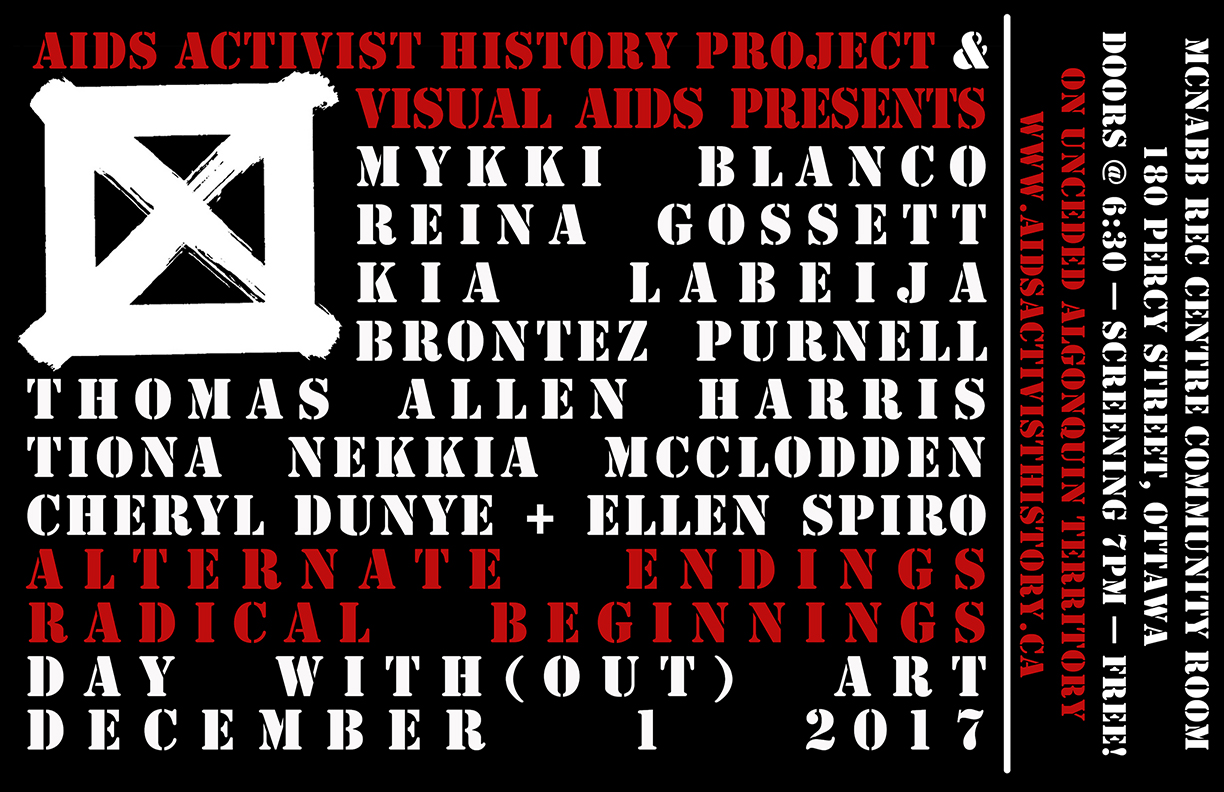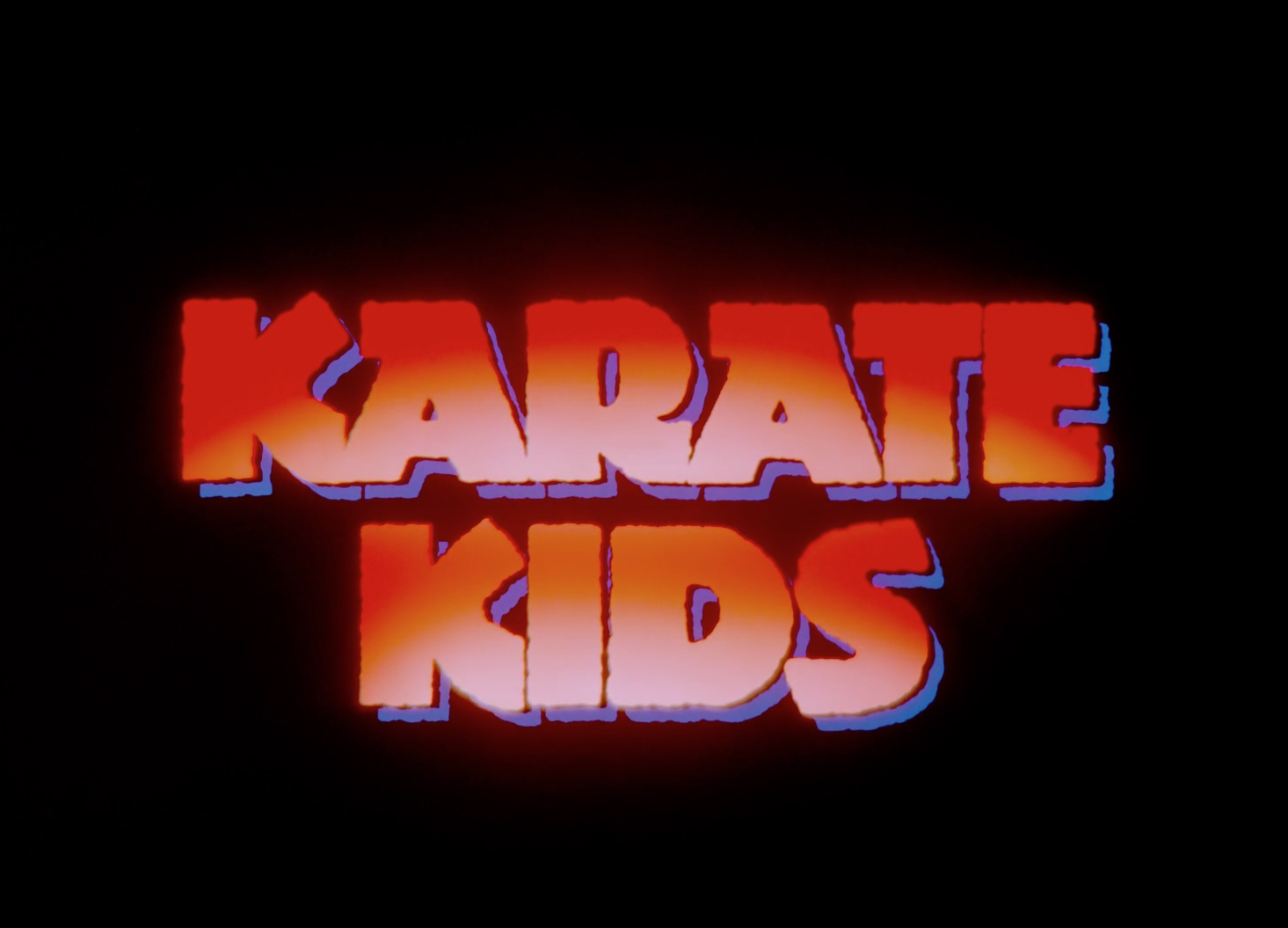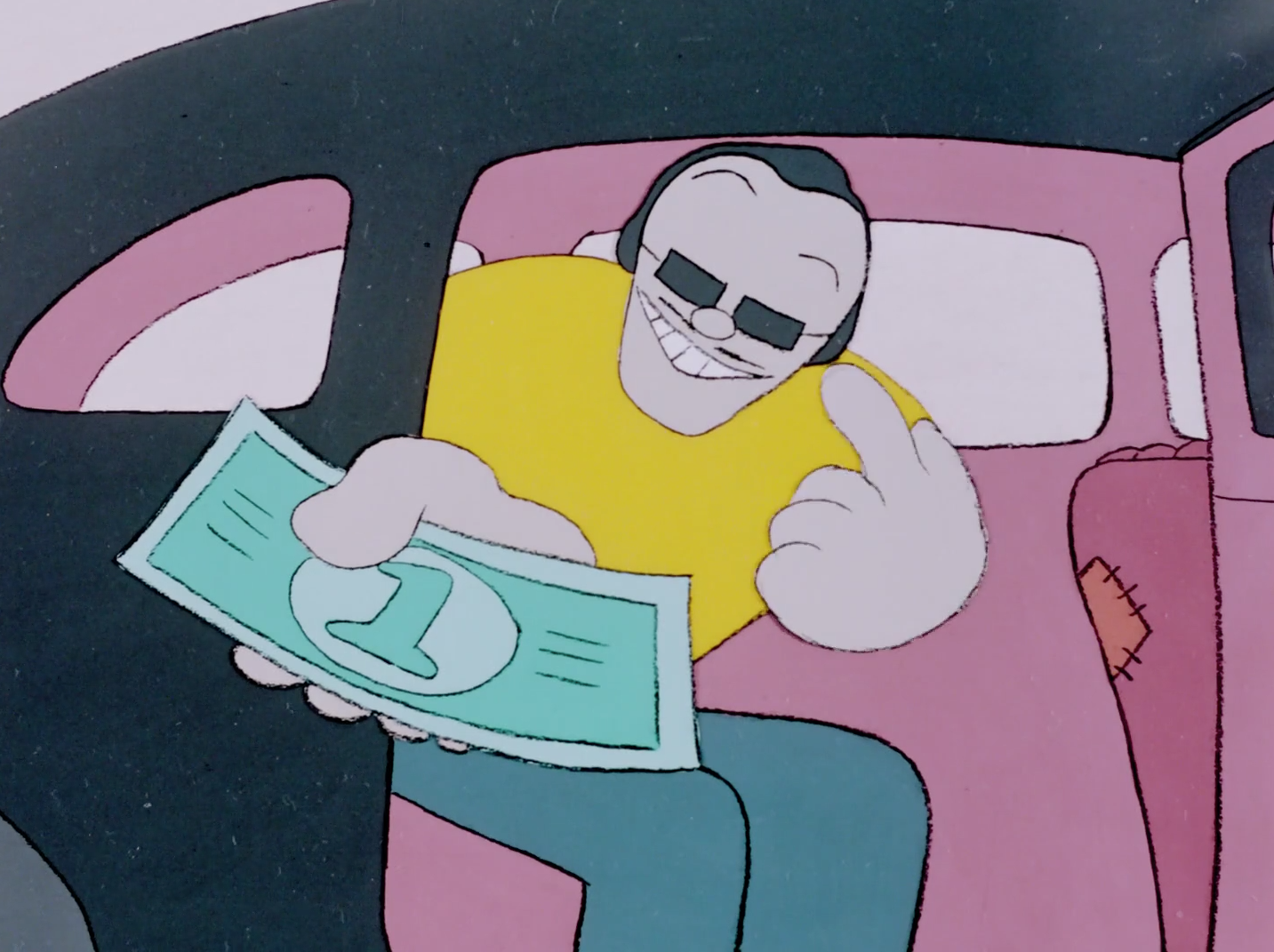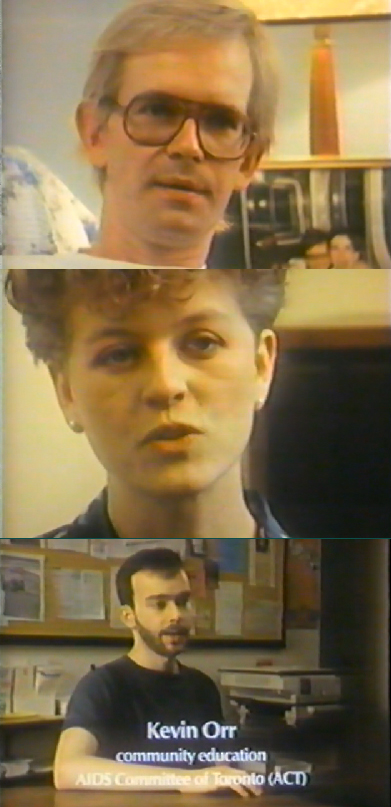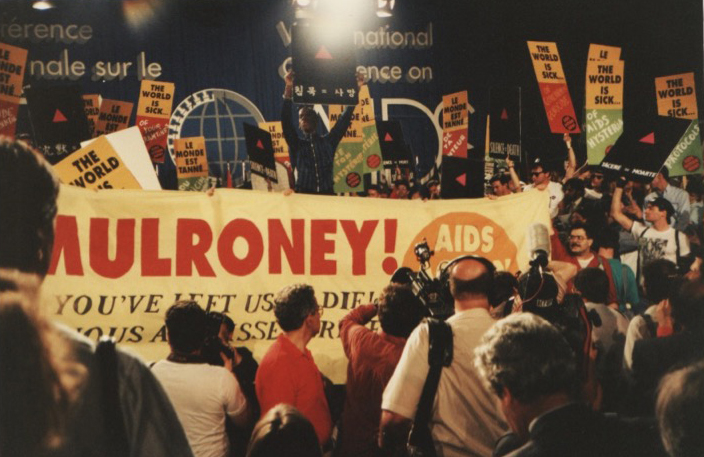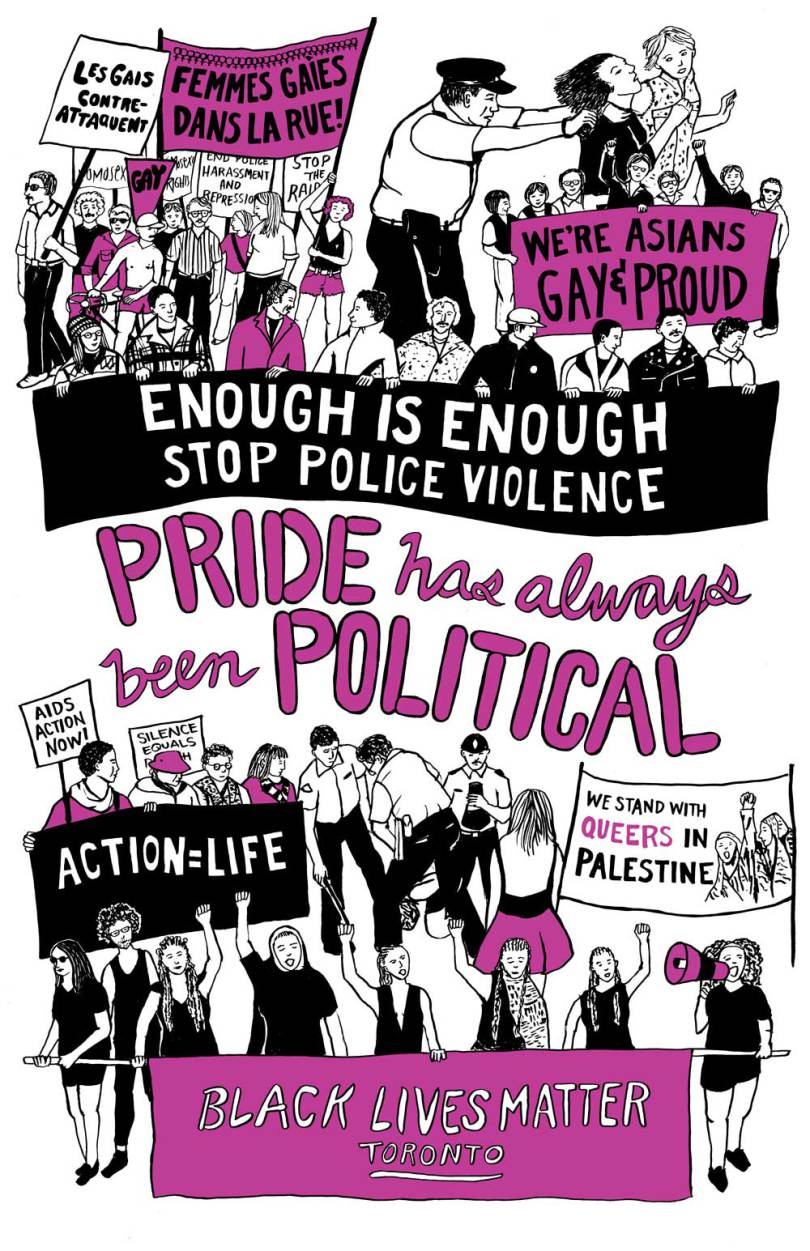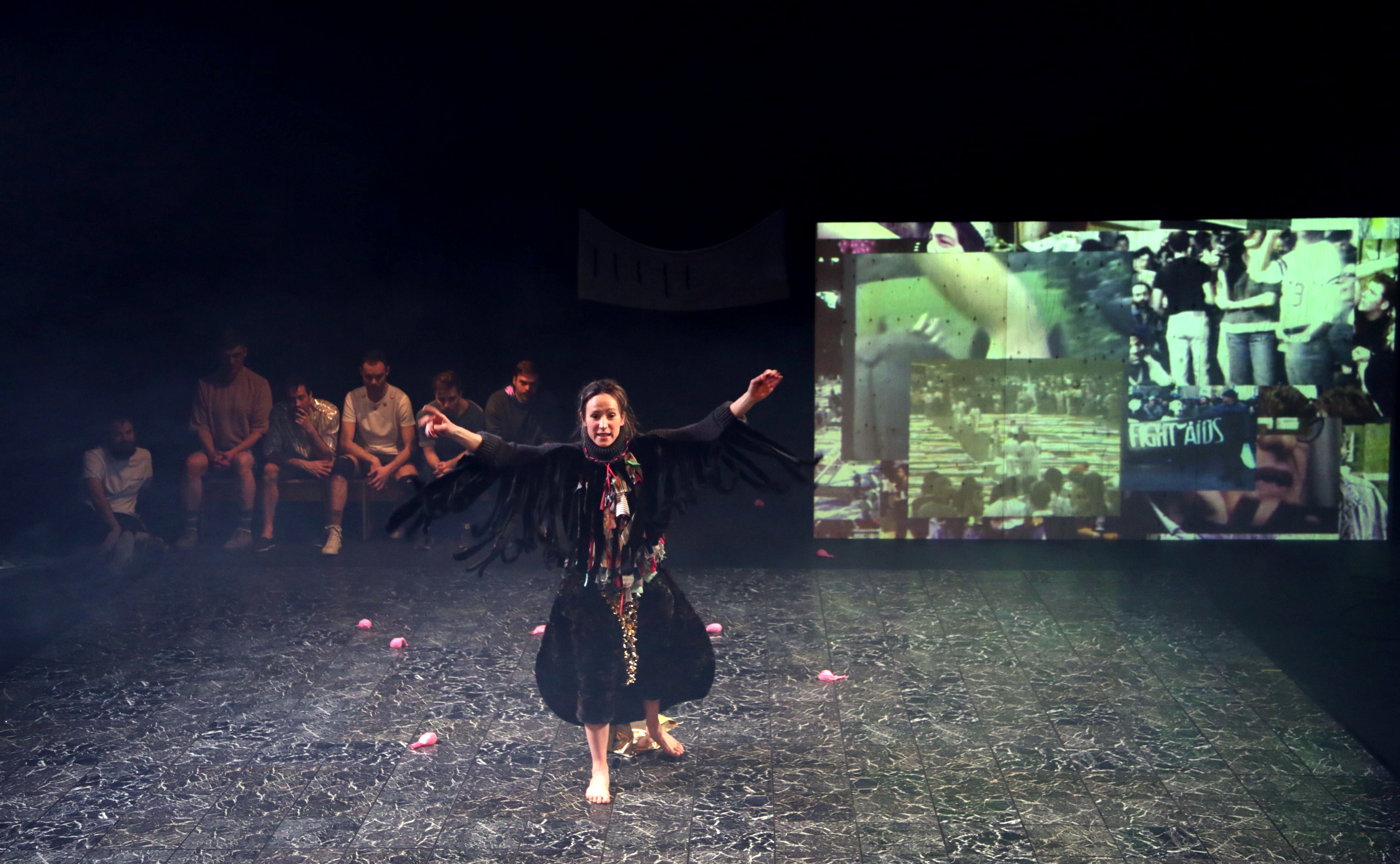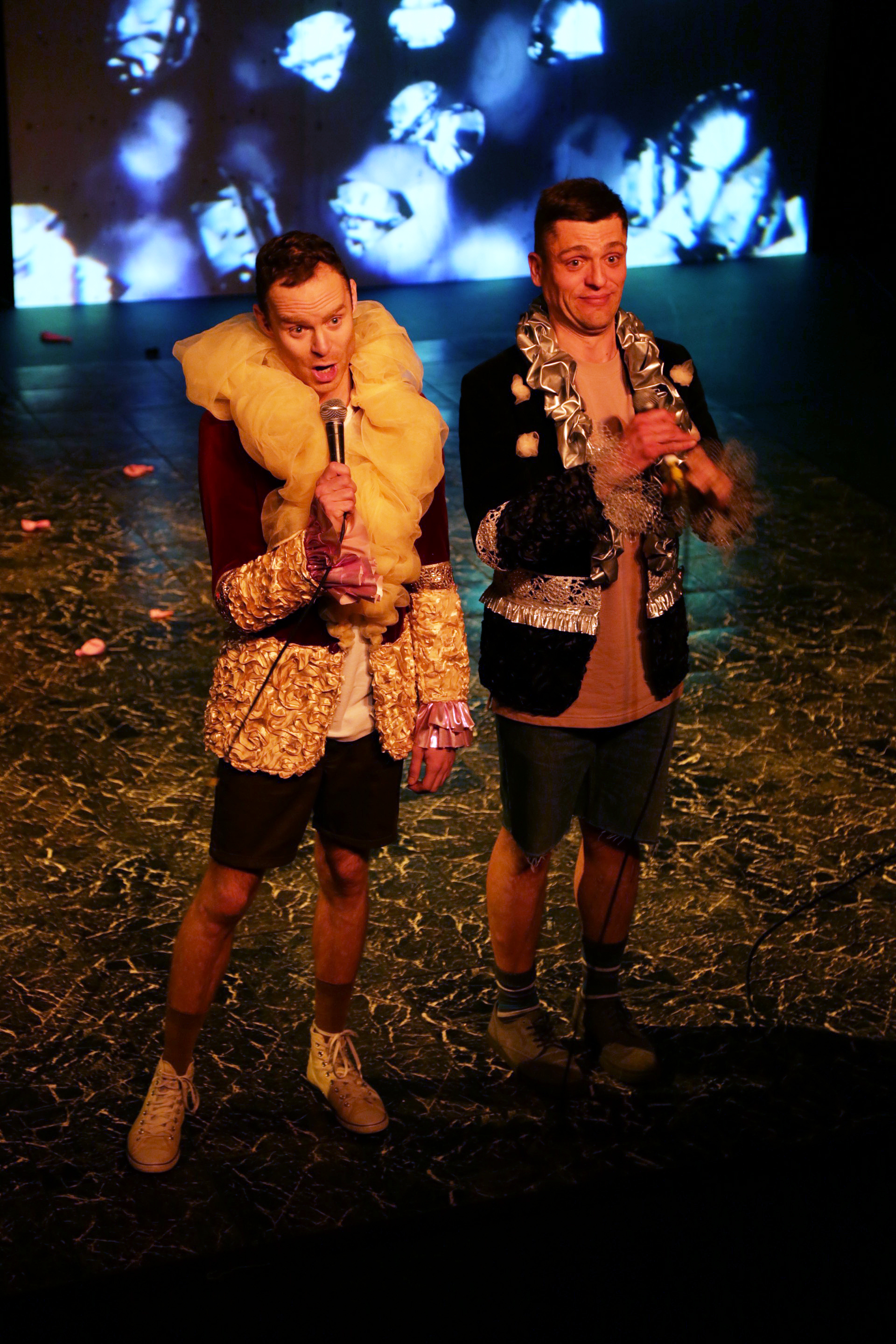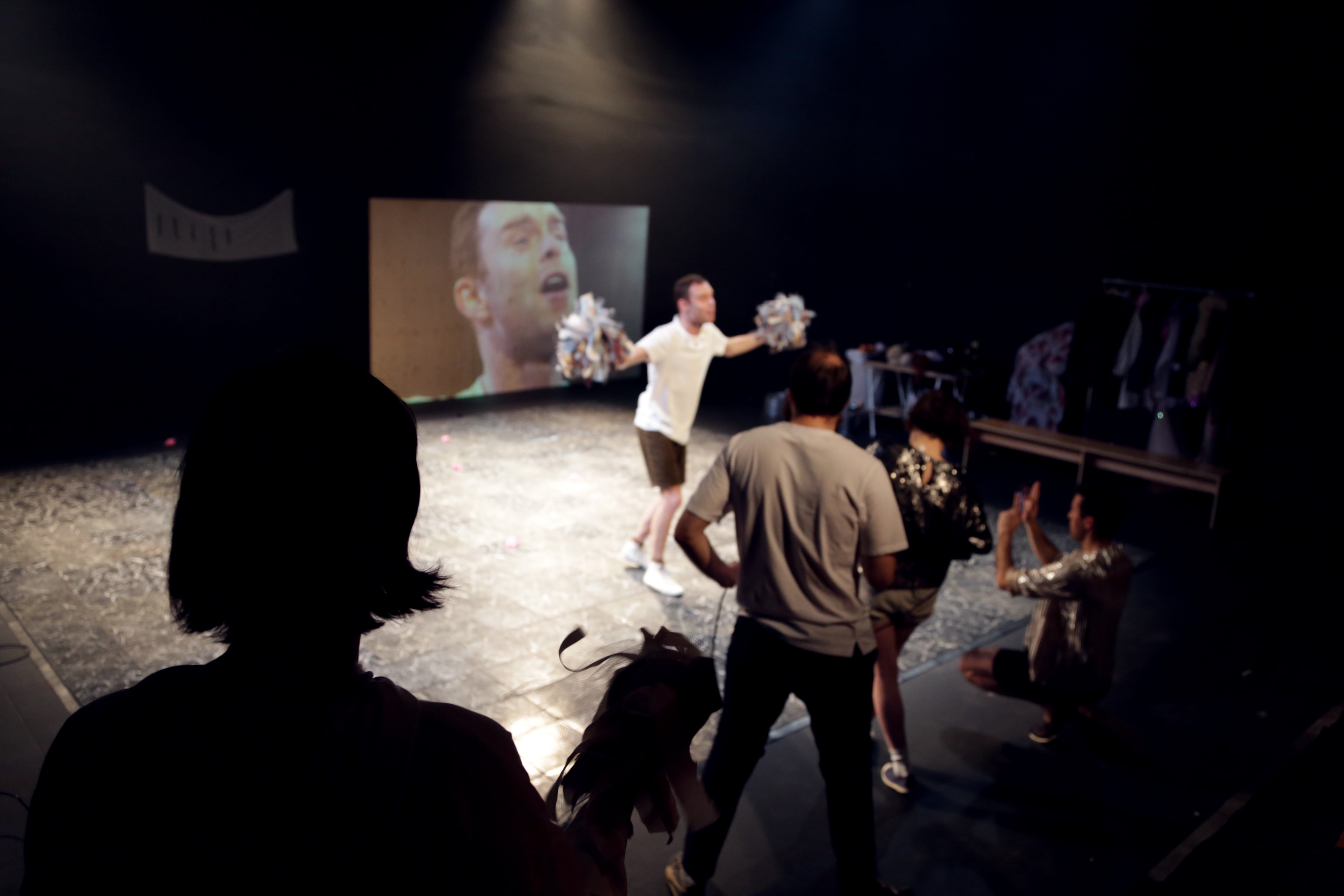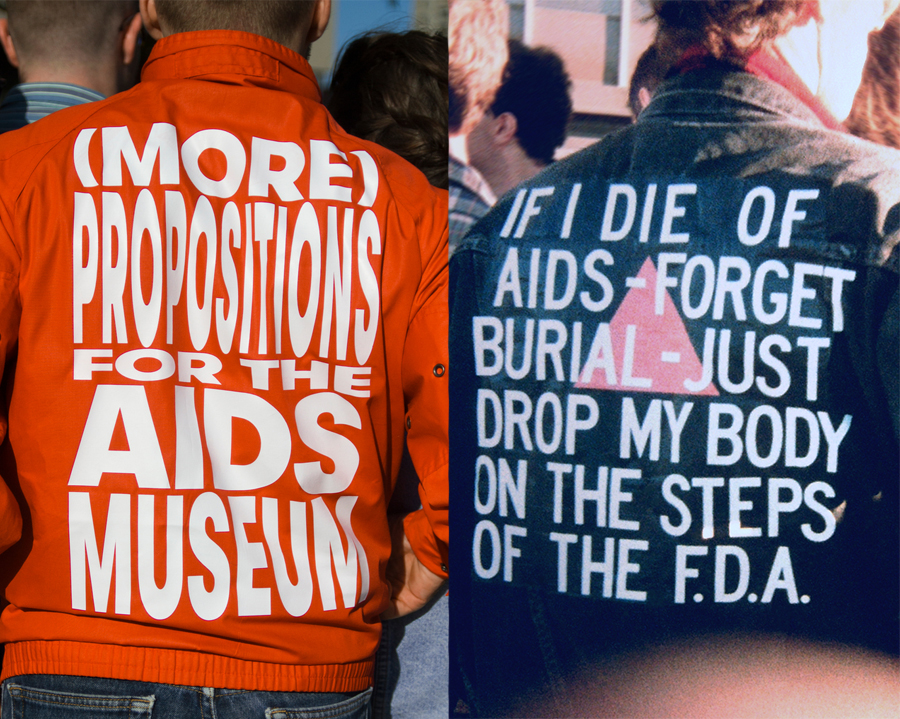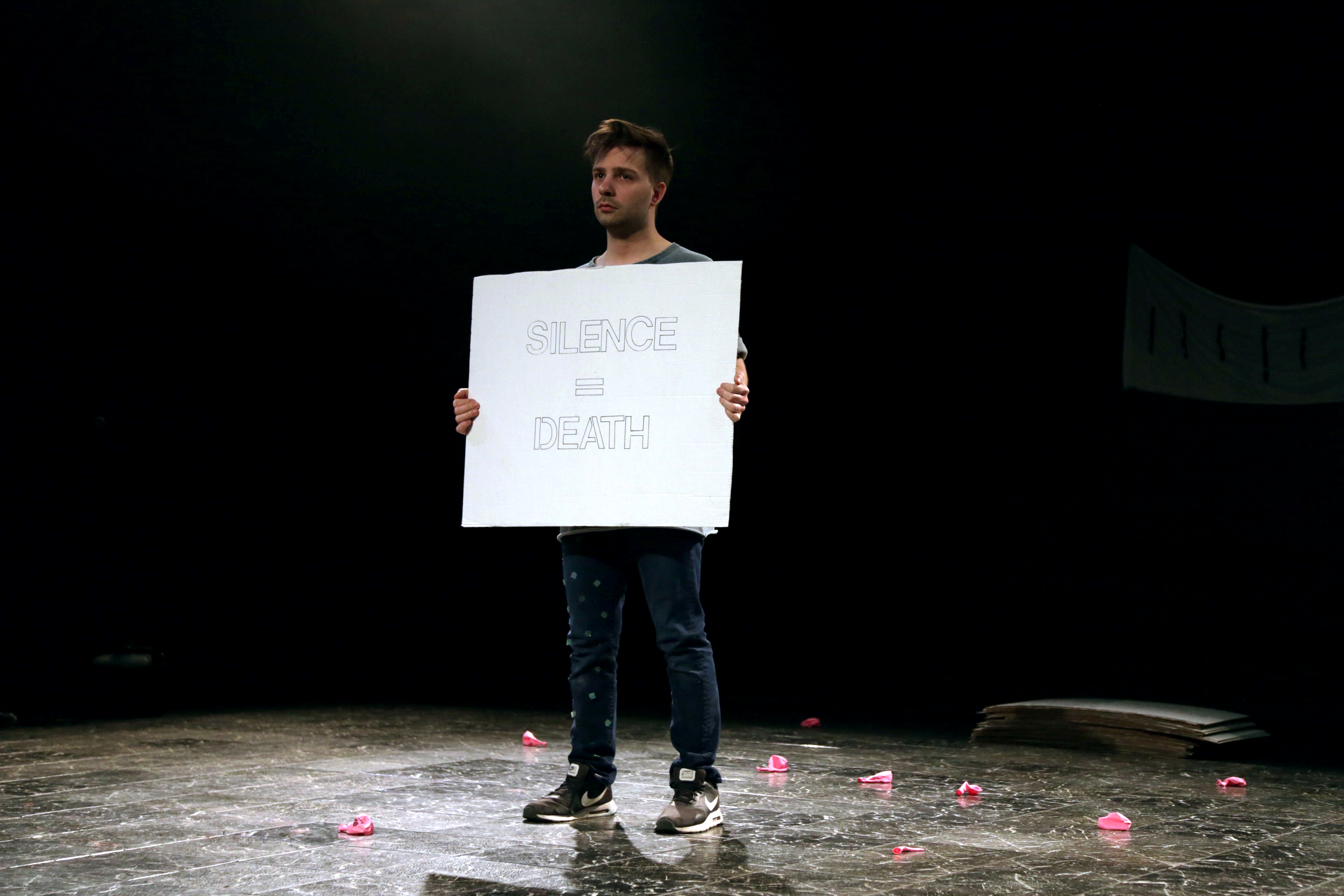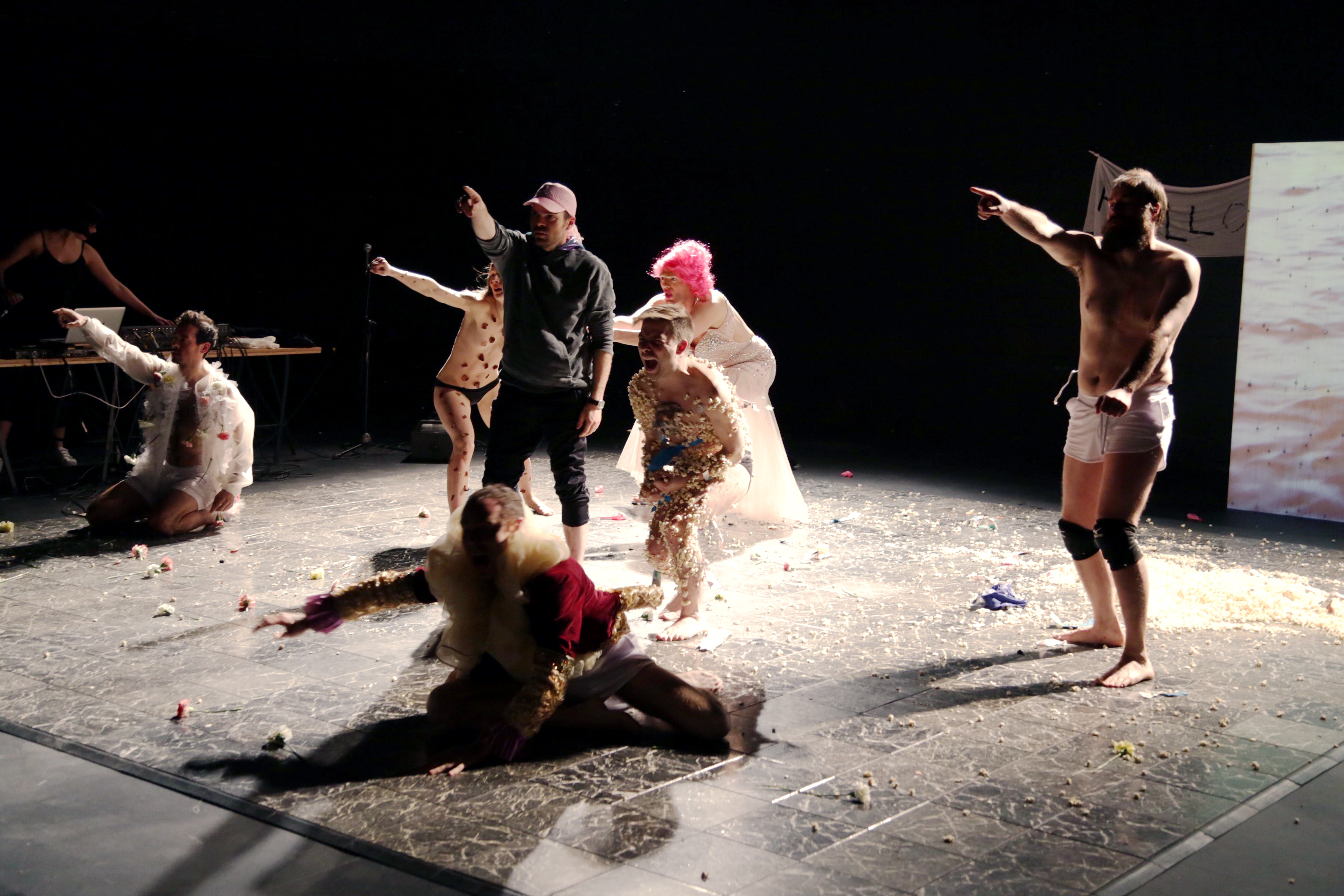As I write this post, on this first day of December, I am again reminded that AIDS remains a condition that still affects so many people and for which there is still no cure. It has left a deep impact on the LGBTQ2S community. Despite all the pain, all the grieving, all the discrimination, AIDS remains to this day a catalyst for activists and champions of human rights. The history of AIDS, even more so of AIDS activism, is incomplete. What I mean is that the written records, the documents, the “evidence” is lacking from our archives. The Archives gaies du Québec – the Quebec Gay Archives or AGQ – does not have, nor does it pretend to have, all that was ever written, made, documented on this topic or any topic for that matter. This is why the word “archives” is always in the plural: not the final, definitive, complete archive – without an s – but the archives that were saved, preserved and documented along those that were lost, destroyed, or forgotten. This is why creating a research guide on the history of AIDS is important and why I accepted to work on this project.
First, I have a confession to make: I have never seen myself as an activist. I am both an archivist and a translator. My work has always happened in the background, away from prying eyes, in the shadow (and yes, often in the basement). I am not the kind of person who grabs a sign and walks in protest of something, with one exception. For years now, my husband and I have raised money and marched in the Farha Foundation AIDS Walk in Montreal, an event that sadly folded after the 2015 edition. I have too much respect for activists and the actions they take to refrain from calling myself that. Of course, one can still be political in other ways: from refusing to grammatically put women in parentheses when translating a text into French, to adapting existing archival standards that turns the focus from “the powerful” to those whose voices are seldom heard; knowing that the status quo is not the true representation of society and that archives are incomplete.
The research guide (available here) summarizes what is held at the AGQ. It presents a list of archival fonds, what us archivists call collections of records – a word that comes from the French fonds d’archives – that primarily focuses on AIDS, a list of fonds where AIDS is documented but not the primary focus, a lists of periodicals, and research techniques or tips for books, posters, audiovisual recordings and other material. While browsing these lists, one quickly notices an overrepresentation of archival material documenting the perspective of gay men or men who have sex with other men. Smaller fonds do focus on the experiences of trans people, lesbians, and bisexuals but the corpus is a lot thinner. If anything, creating this research guide has shown a gap for these other voices, silences, a lack of diversity that happened not because of intent or malice but simply because of the way the material was organically collected. From this gap we can justify rejecting the status quo and actively seeking out those other experiences that will help document the broad and diverse experiences of everyone in the LGBTQ2S community. All of us working on the AIDS Activist History Project and at the AGQ hope that this research guide will promote the discovery and use of this community documentary heritage. As the AGQ continues to acquire more records, and hopefully records that document an even greater diversity and inclusivity of voices, this guide will be augmented accordingly.
I would like to thank Alexis and Gary whose work allowed for the creation of this guide. A special thank you goes to Ross and Jacques, two guardians of memory, who continue to see to the day-to-day activities at the AGQ.
by Jonathan Dorey
Au moment d’écrire ces lignes en ce premier jour de décembre, j’ai la démonstration que le sida continue de frapper tant de gens et pour lequel il n’existe aucun traitement. Le sida a profondément marqué la communauté LGBTQ2S. Malgré la douleur, le deuil, la discrimination, le sida sert toujours de catalyseur pour les activistes et les défendeurs des droits de la personne. L’histoire du sida, et plus encore cette de l’activisme du sida, est incomplète. Je pense aux documents écrits, au matériel produit à toutes ces « preuves » qui manquent dans nos archives. Les Archives gaies du Québec (AGQ) n’a pas ni ne prétend avoir l’ensemble de tout ce qui a été écrit, publié ou produit sur le sujet ou aucun autre sujet d’ailleurs. Voilà pourquoi on utilise le mot « archives » au pluriel : non pas l’archive définitive, exhaustive et complète, sans le s, mais plutôt les archives sauvées, préservées et documentées ainsi que celles perdues, détruites ou oubliées. C’est pour ces raisons que la création d’un guide de recherche sur l’histoire du sida importe tant et que j’ai accepté de participer au projet.
Mais d’abord, une confession : je ne me suis jamais vu comme un activiste. Je suis à la base archiviste et traducteur. Mon travail s’est toujours déroulé en arrière-plan, à l’abri des regards, dans l’ombre (et oui, souvent au sous-sol). Je ne suis pas le genre de personne à prendre une pancarte et à aller manifester, avec une exception. Pendant des années, mon mari et moi avons amassé de l’argent et marché lors de la marche annuelle contre le sida de la Fondation Farha à Montréal, évènement qui a malheureusement cessé après sa dernière édition en 2015. J’ai trop de respect pour les activistes et leurs actions pour m’arroger ce titre. On peut par contre être politique autrement : du refus d’enfermer les femmes entre parenthèses dans un texte français à l’adaptation de normes archivistiques pour donner toute leur place aux sans-voix plutôt qu’uniquement aux « puissants »; reconnaître que le statu quo ne représente pas adéquatement la société et que les archives sont toujours incomplètes.
Le guide de recherche ressemble en un document ce que détiennent les AGQ. On y retrouve une liste de fonds d’archives, soit des collections de documents, portant principalement sur le sida, une liste de fonds où le sida est abordé mais de façon secondaire, une liste de périodiques et une série de techniques de recherche et de conseils pour chercher livres, affiches, enregistrements audiovisuels et autre matériel. En parcourant ces listes, on se rend vite compte qu’il y a une surreprésentation de documents d’archives offrant la perspective d’hommes gais ou d’hommes ayant des relations sexuelles avec d’autres hommes. Les AGQ détient également d’autres fonds sur l’expérience des personnes trans, lesbiennes ou bisexuelles, mais ce corpus est beaucoup plus mince. Créer ce guide de recherche a permis de mettre en lumière ce vide, ce silence, ce manque de diversité qui ne s’explique pas par une intention ou par malice, mais plutôt par un mode d’acquisition naturel. Ceci justifie le rejet du statu quo et le désir de rechercher ces autres expériences qui permettront de mieux documenter toute la diversité des expériences de la communauté LGBTQ2S. De nous tous qui travaillons sur le projet d’histoire de l’activisme sur le sida et aux AGQ, nous espérons que ce guide de recherche favorisera la découverte et l’utilisation de ce patrimoine documentaire communautaire. Le guide sera mis à jour et fur et à mesures des nouvelles acquisitions des AGQ, acquisitions qui nous le souhaitons seront encore plus diversifiées et inclusives.
J’aimerais remercier Alexis et Gary sans qui ce guide n’aurait pu être possible. J’aimerais également saluer le travail tout particulier de Ross et Jacques, deux gardiens de la mémoire, qui voient aux activités quotidiennes des AGQ.
